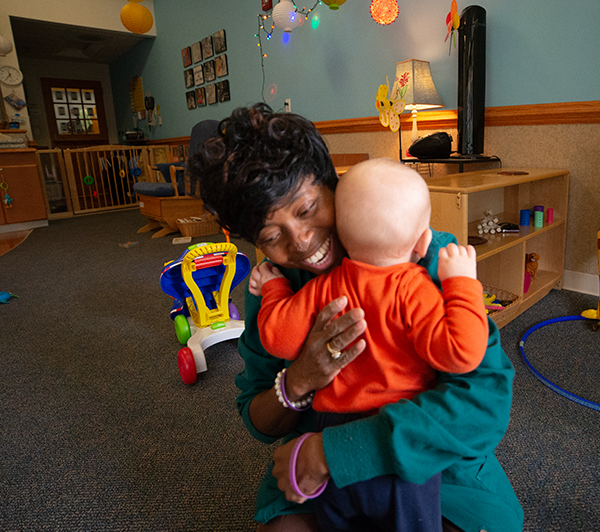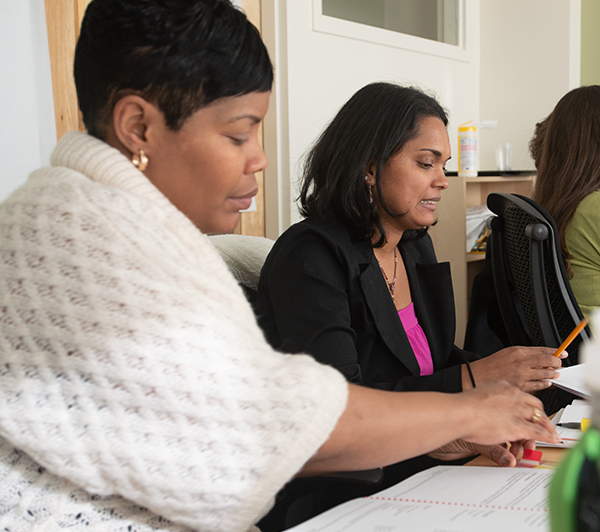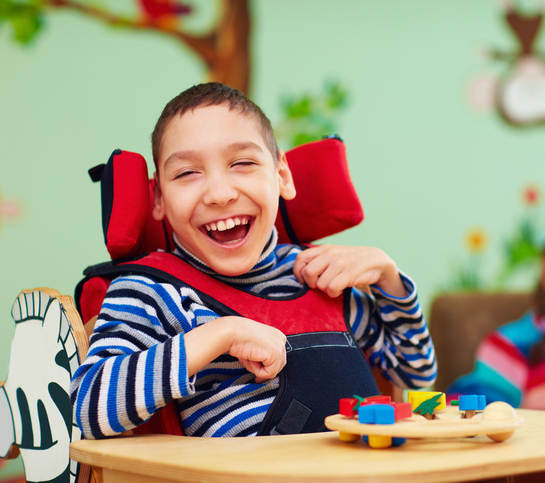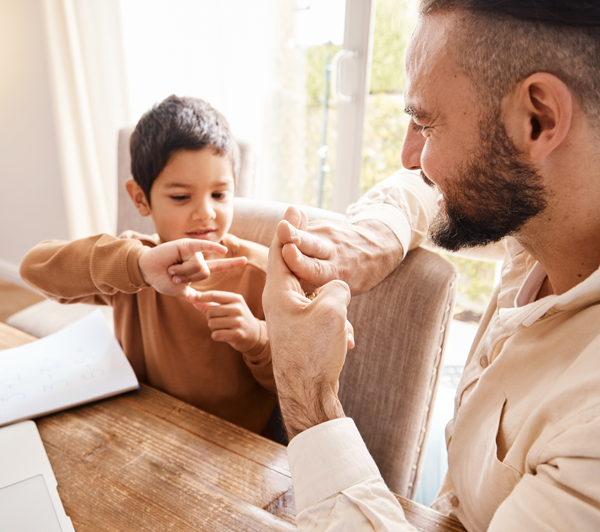Children with Disabilities
Every day, educators strive to provide high-quality learning experiences to young children with disabilities.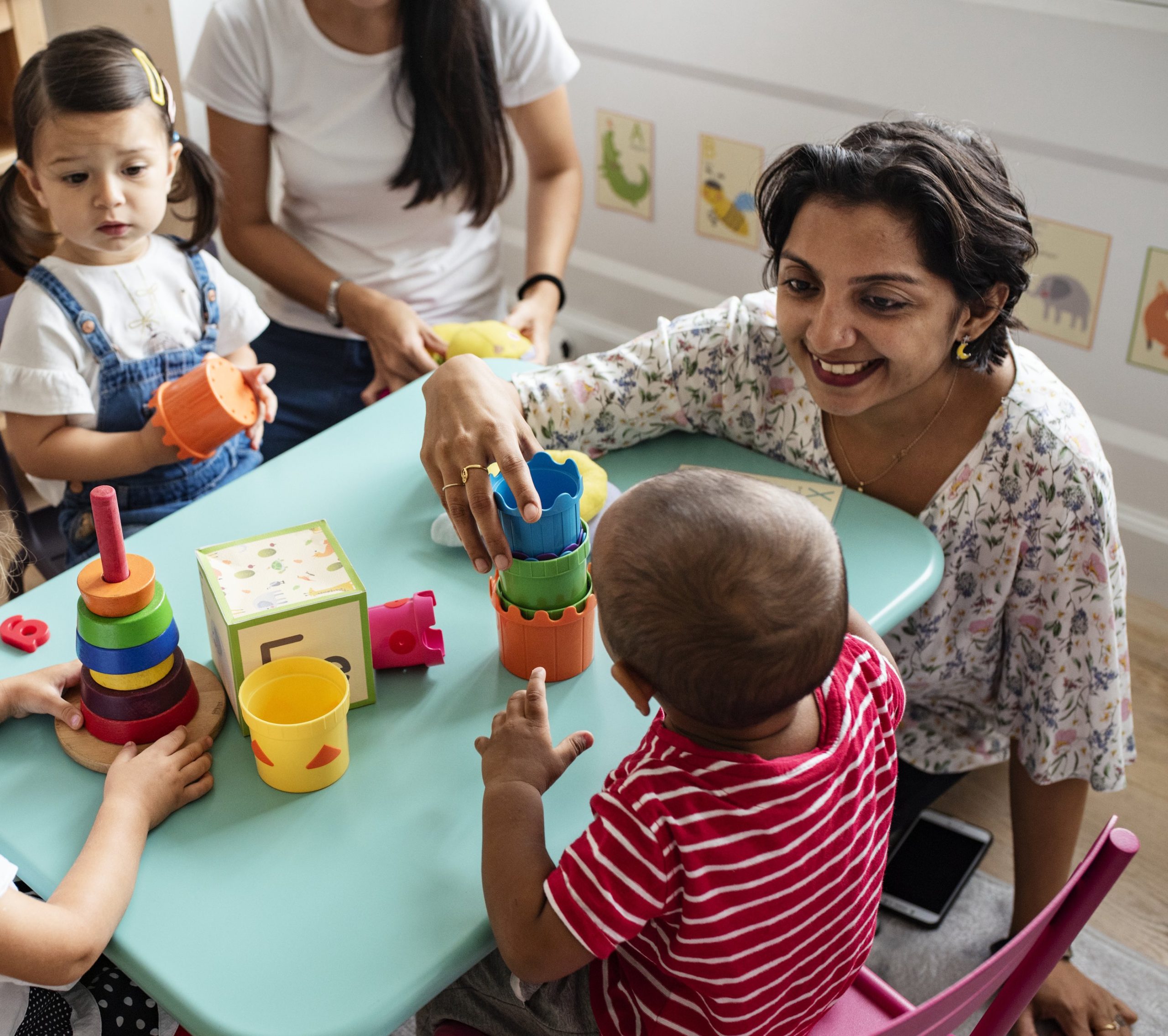
Guidance Resources
As educators interact with children with disabilities, they connect in ways that cultivate emotionally supportive relationships, engage learners in ways that create a context for learning, and leverage instructional support tailored to the needs of each child in order to inspire learning. The resources on this page are designed to guide efforts to use CLASS® to capture these interactions.Recommendations for CLASS Observers: Settings Serving Children with Disabilities (Pre-K - 3rd Grade)
Selecting Which CLASS Tool to Use in Settings that Serve Children with Disabilities (Pre-K - 3rd)
CLASS Observations in Settings Where American Sign Language (ASL) is Used to Communicate
Videos of Effective Educator-Child Interactions
All of these videos include children with disabilities learning alongside their peers. Disabilities are often not visible or obvious. This is part of why it’s helpful to learn general information about a classroom before conducting a CLASS observation. As you watch, consider the ways in which educators' interactions demonstrate their awareness of and responsiveness to individual children’s emotional and academic needs.Clear Instructions and Thumping for a Transition
As you watch this video, look for how the teacher:
- Gives the children clear instructions
- Follows through in the transition by walking with the children
CLASS Indicators In the Video
Maximizing learning time
In this video, the teacher provides the children with the activities of listening to her list each center, choosing a center, thinking of a backup plan, and going to centers.
There are no disruptions that take away from instructional time.
Routines
The children know what to do. For instance, when the teacher says, “Let’s practice our heartbeats and go to our tables,” the children immediately begin tapping their chests and saying “thump.”
The teacher gives the children clear instructions: “So you think about that and then have a backup plan. So let’s practice our heartbeats and go to our tables.”
There is little wandering in the classroom. The children sit in their chairs as the teacher talks and walk over to their seats at the table. When Oscar does not walk to the tables, the teacher quickly responds, offering to help him find his name (“Oscar, let’s go find your name”).
Transitions
The transition from the carpet area to the tables is quick and efficient.
Preparation
Smiles and Giggles at the Sand Table
As you watch this video, look for how:
- The teacher creates a warm environment for the students
- The teacher’s enthusiasm sparks the children’s enthusiasm
- The teacher speaks respectfully to the children
CLASS Indicators In the Video
Relationships
The teacher stands near the students and leans in toward them at the sand table.
The teacher participates in the activity as the children play at the sand table.
The teacher engages children in a social conversation about a bug being in the sand, pretending it is in a cup of coffee (“Ooh, and a bug flew in it. Yikes. This is a small problem. I’m gonna scoop it out. You think I could still drink it if there’s a bug in it?”).
Positive affect
The children smile and giggle when the teacher jokes, “Take a sip. Be careful of the bug.” The teacher laughs with the children.
The teacher and the children demonstrate enthusiasm. The teacher speaks with enthusiasm as she talks about what she is doing with the sand. When the child excitedly says, “Look at this,” the teacher looks and says, “Whoa, it’s empty.”
Respect
The teacher looks at the children as she speaks to them.
The teacher uses a warm, calm voice when speaking to the children.
The teacher uses the students’ names (“What did I say, Yonie?” “Catherine gave me a scoop”).
The teacher uses respectful language (“Ooh, thank you, I would love a turn,” “Ooh, thank you, Catherine”).
Expanding Involvement While Playing Doctor
As you watch this video, look for how:
- The teacher is involved in the children’s play
- The teacher has provided a variety of materials
- The children actively participate in the activity
CLASS Indicators In the Video
Effective facilitation
The teacher is actively involved in the children’s play.
The teacher asks the children engaging questions, such as “Does he need medicine?” and “Did you write down the dog’s name?”
The teacher expands a child’s involvement by going to the chart with him, pointing out the chair, and sounding out the |ch| sound to encourage him to write the name “Chase.”
Variety of modalities and materials
The children interact with a variety of materials, including the whiteboard, markers, medical toys, and stuffed animals that the children use as their “patients.”
Student interest
All of the children actively participate in the pretend doctor’s office. They use the available materials, show the teacher their toys, and respond to the teacher’s questions.
Scaffolding to Help a Child Form Letters
As you watch this video, look for how the teacher:
- Provides hints to help the child form the letters
- Encourages the child when he is unsure
CLASS Indicators In the Video
Scaffolding
The teacher provides hints, such as when she says, “Going: guh-guh-guh-guh-goose,” to help the child determine the initial letter to write for the word “going.”
The teacher provides assistance, such as when she says, “So you can go down, slant, up, slant,” as the child is writing the letter “m.”
Providing information
The teacher clarifies how to write letters for the child. For example, she clarifies how to write the letter “t” (“So you’re gonna go down and across for ‘t’”).
The teacher provides specific feedback to the child. For example, she says, “So you’re gonna go down. And then around and around. Two bumps on ‘b.’”
Encouragement and affirmation
The teacher recognizes and affirms the child’s efforts (“Good hard work,” “You’re working hard over here”).
When the child says, “I can’t make a trundle bike into a line,” the teacher encourages him to continue by saying, “Well, let’s try it, and then I’ll help your hand if it needs help.”
Effective Facilitation Before a Freeze Dance
As you watch this video, look for how:
- The teacher has the children help her write what they’re going to do next on the board
- The children listen and participate
CLASS Indicators In the Video
Effective facilitation
The teacher involves the children by having them verbally help her write what they are going to do next on the board.
The teacher effectively uses questions to engage the children: “Let’s check. Make sure we have all the lines we need for this message. Are you ready?” and “Is that better?”
Variety of modalities and materials
Student interest
The children participate by saying the words to the sentence about their upcoming activity with the teacher.
The children listen to the teacher and pay attention. For example, the children giggle when they realize there is a missing blank line for words. When the teacher asks, “What’s wrong?” a child answers, “You need more lines.”
Clarity of learning objectives
Mat Man
As you watch this video, look for how:
-
The educators vary their responses to individual children
-
These varied responses impact children’s engagement in back-and-forth exchanges
CLASS Indicators In the Video
Positive Communication
The educator gives a high five to a child, and the educator and child in the pink sweatshirt hug each other.
Child Comfort
Children freely participate in the different activities (jumping, doing puzzles, playing Head, Shoulders, Knees, and Toes, ripping paper).
Some children approach the educators.
Scaffolding
Encouragement and Affirmation
When a child struggles, the educator encourages the child by saying, “Try again!”
When the child successfully rips the paper, the teacher smiles excitedly and tells the child that she “was tricking her!”

